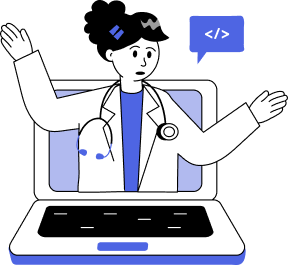- What is Custom Software Product Development, and Why Does It Matter?
- Engineering Excellence
- Adopting an Agile Mindset
- Digital Infrastructure
- Data-Driven Product Management
- Benefits of Software Product Development
- Better Scalability
- Meet Changing Customer Needs
- Optimized Business Processes
- Improved Productivity
- Software Integration
- Enhanced Reliability
- Constant Technical Support
- What Are the Indicators for Software Product Development Necessity in Your Business?
- When Your Business is Expanding
- When Your Supply Chain Has Bottlenecks
- When Your Customer Base Grows
- Things to Consider Before Starting with Software Development
- Technical Expertise
- Ability to understand the user’s demand
- Setting Your Priorities
- Software Hosting and Distribution
- Deployment
- Post-Launch Maintenance and Support
- Types of Software Product Development
- Features of a Robust Software Product for Businesses
- Advanced Features Businesses Should Integrate in Their Software Product
- Leveraging Modern Technologies in Software Product Development
- Artificial Intelligence (AI) and Machine Learning (ML)
- Blockchain
- Internet of Things (IoT)
- Cloud Computing
- Augmented Reality (AR) and Virtual Reality (VR)
- How to Create a Custom Software Product?
- Idea and Concept
- Planning and Feasibility Analysis
- Proof of Concept
- Design
- Proof of Value
- Development and Coding
- Quality Checking and Testing
- Deployment and Implementation
- Marketing Strategies
- Maintenance, Upgrades, and Enhancement
- Understanding the Software Development Time and Cost and How to Lower Them
- Step 1: Turn to Outsourcing
- Step 2: Leave No Room for Assumptions
- Step 3: Testing is the Key Element
- Step 4: Prioritize the Must-Have Features
- Step 5: Start with an MVP
- Inhouse Development vs Outsourcing: Understanding the Right Strategy to Develop a Robust Software Product
- Tips to Outsource a Software Development Company
- Conduct a Background Check
- Check Their Abilities and Technical Knowledge
- Check the Type of Services They Provide
- Check Their Experience in the Market
- Check Their Software Development Methodologies
- Check on the Cost of the Project
- Software Product Development Best Practices
- Identify the Target Audience
- Define and Design Your Product Roadmap
- Take User Feedback
- Go For Beta-Testing
- Create a Buzz With Social Media
- Popular Software Development Methodologies
- Challenges Associated with Robust Software Product Development
- Challenge 1: Integrating New Technologies
- Challenge 2: Ensuring Data Security
- Challenge 3: Managing Project Scope
- Challenge 4: Balancing Quality and Speed
- Challenge 5: User Experience Consistency
- Challenge 6: Technical Debt Management
- Showcasing Excellence in Digital Product Development: Success Stories Highlighting Our Expertise
- JobGet: Transforming the Job Search Landscape with AI
- Edfundo: Educating the Next Generation on Financial Literacy
- ILITY: Innovating Real Estate Management
- KFC: Revamping a Global Brand’s Digital Presence
- Why Appinventiv is the Ideal Partner for Software Product Development
- FAQs
Creating a product that can gain instant traction in the market is seldom a straightforward process. Unclear objectives, vague user personas, inadequate documentation, and a range of other obstacles often impact the progress of ambitious businesses. As a result, about 35% of projects encounter significant setbacks and fail to overcome the challenges of the complex development process.
By embracing a systematic methodology and establishing an appropriate team framework, it is possible to streamline a significant portion of the custom software product development process. This approach not only puts your project for success but also enhances the ability to deliver high-quality results.
Software product development can empower businesses to design innovative solutions that cater to their target base’s ever-evolving needs and expectations. Developing custom software products allows companies to capitalize on technology to boost productivity, streamline workflows, and provide exceptional user experiences. In addition to this, it offers them opportunities for growth, revenue generation, and market expansion.
According to recent reports, the global custom software development ecosystem is expected to witness a CAGR of 22.5% from 2024 to 2030, reaching $146.18 billion 2030. The expanding market size can be attributed to various factors, such as the growing demand for enterprise software requiring real-time data analysis, flexible workspaces to boost productivity, etc.
Thus, if you want to seize a competitive edge and harness these growth opportunities, now is the perfect time to invest in custom software development to future-proof your operations and drive substantial market success.
This software development guide will pave the way for a better understanding of software product development, what it entails, its importance, types, and much more. So, let’s get started!
What is Custom Software Product Development, and Why Does It Matter?
Software product development involves designing, creating, testing, and launching a software application that meets specific needs. This process is essential because it transforms ideas into functional tools that businesses and individuals rely on every day.
In a world driven by technology, software solutions are crucial. They streamline operations, enhance user engagement, and open new markets by offering innovative, tailored services. Whether it’s improving how businesses interact with customers through software or how data is managed and utilized with AI and IoT, software development is not just necessary but is indispensable for staying competitive and efficient in the modern digital landscape.
Moreover, software product development is continuously evolving, pushing companies to innovate constantly and adapt swiftly to new market demands. This ongoing evolution helps businesses not only to solve current problems but also to anticipate future challenges and opportunities. As a result, companies that invest in creating robust software products can better adapt to changes, lead innovation, and deliver exceptional value to their customers, making software development a critical strategy in today’s fast-paced business environment.
For businesses planning to develop a software product, here are the four constituents of a well-defined software product development strategy:
Engineering Excellence
To develop an innovative work culture, it is crucial to establish a collaborative environment that enables self-managed teams to produce unconventional ideas. Encouraging an engineering-focused culture can drive product advancement and provide an ideal ecosystem for brainstorming innovative solutions.
Adopting an Agile Mindset
Adopting an Agile mindset is vital when building products from scratch and accommodating ever-changing requirements. This methodology emphasizes delivering value through flexible, customer-centric strategies. Furthermore, it is crucial to acknowledge that the success of an agile development strategy is dependent on considering it an overall team-oriented approach rather than an isolated operation.
Digital Infrastructure
Your technology stack should support efficient process management and enable adaptability and flexibility for making safe and sustainable changes in production. Microservices architecture, cloud computing, and open-source APIs are highly adaptable digital components that allow your team to make changes efficiently and effectively. These components help your business stay ahead of the competition by catering to customers’ evolving needs and capitalizing on growth opportunities.
Data-Driven Product Management
To ensure that your development team is independent and focused on achieving key performance indicators (KPIs), monitoring and visually representing enterprise software product development metrics that gauge delivery performance is essential. These metrics might include deployment frequency, lead time, and other indicators that demonstrate how well your team is performing. By tracking these metrics, you can ensure that your team remains on track and constantly works to improve its delivery processes.
Understanding that these requirements can be catered to effectively by outsourcing your project to a dedicated software development company with years of expertise in the field is vital. But, before highlighting the benefits of outsourcing, let us first look at the few advantages of software product development.
Benefits of Software Product Development
In today’s digital landscape, businesses can reap numerous benefits from software product development. Custom software solutions developed from scratch can be tailored to meet specific business needs, increasing overall operational efficiency and productivity while offering a competitive edge. Companies can leverage technology to their advantage and gain greater control over their operations by investing in custom software product development.
Let us look at the benefits of software product development in detail below:
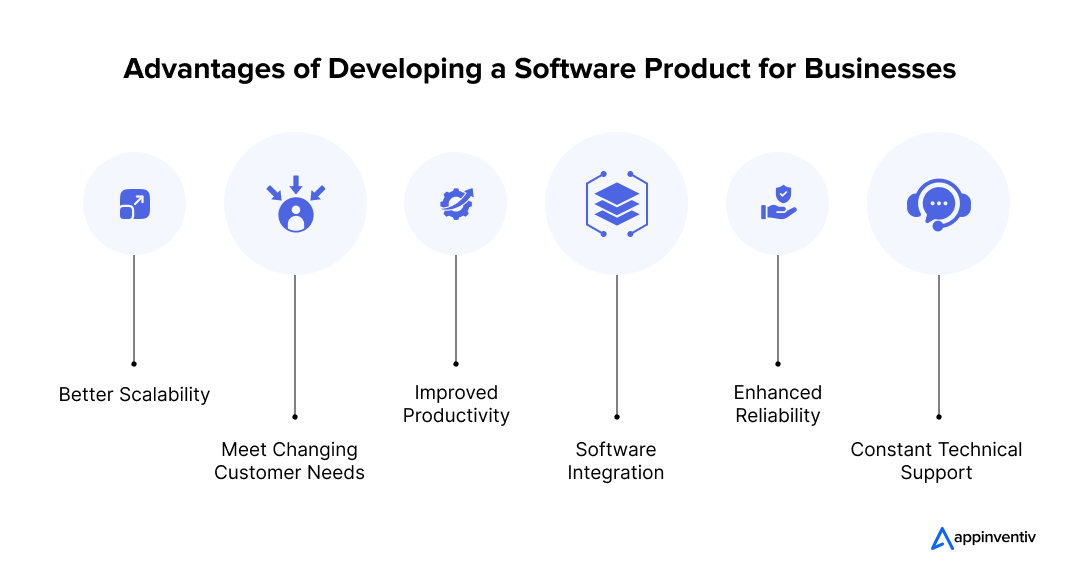
Better Scalability
As your business grows, so do your requirements. Off-the-shelf software solutions can become expensive due to licensing and support costs as your business expands. Developing a software product from scratch is a cost-effective way to accommodate business growth and scale operations.
Meet Changing Customer Needs
As business requirements evolve and change, the software products used to meet those needs must also be able to adapt. By utilizing a process of continuous software product development, businesses can ensure that their products are always up-to-date and meet the latest customer demands.
This approach allows regular tweaks and updates to be made to the product based on feedback from customers and users – ensuring that the result is exactly what is needed. Ultimately, this leads to a better overall customer experience and increased satisfaction.
Optimized Business Processes
When it comes to business, time is money. The faster your processes are optimized and running smoothly, the more profitable your company will be. Many businesses are turning to software product development to streamline their operations.
Custom-made software tailored to your needs can help you optimize everything from sales and marketing to accounting and HR.
Improved Productivity
Businesses relying on off-the-shelf software solutions, which do not offer the full capabilities and features the company needs, often experience disruption compared to businesses using customized software.
Having software developed that meets the business’s unique requirements helps the employee work more productively and efficiently. Also, employees can complete their job duties satisfactorily because they have proper software supporting the job requirements.
Software Integration
Utilizing custom software development, you can integrate your new software with an existing one to enable continuity. Custom software mitigates or lowers the chances of integration issues and can easily fit into the software ecosystem of any kind of business. Custom software development helps businesses with outdated systems easily update the business process and shift to the cloud and mobile.
Enhanced Reliability
Purchasing off-the-shelf software makes a business dependent on the company that has developed it. The terms and conditions, pricing, and the future of the business all go out of your hands. If that company suddenly stops updating the product, you will have a limited time to get a hold of a new software provider. Therefore, with custom software, you can utilize it as long as required. Of course, there will be maintenance costs, but you will have to worry less about it overall.
Constant Technical Support
No matter how good a piece of software is, it will always encounter bugs or might require updates. When this happens, contacting customer support for proper assistance becomes crucial. With custom software development, businesses can get constant support from a dedicated team of IT professionals who are always available for post-launch maintenance to minimize downtime and keep the business processes running efficiently. Sometimes, businesses outsource technical support to a specialized company to ensure access to the latest technology and expertise.
What Are the Indicators for Software Product Development Necessity in Your Business?
Every business in today’s fast-paced world requires software products, which help companies gain momentum and competitive advantage. Here are some common scenarios indicating why your business needs software product development:
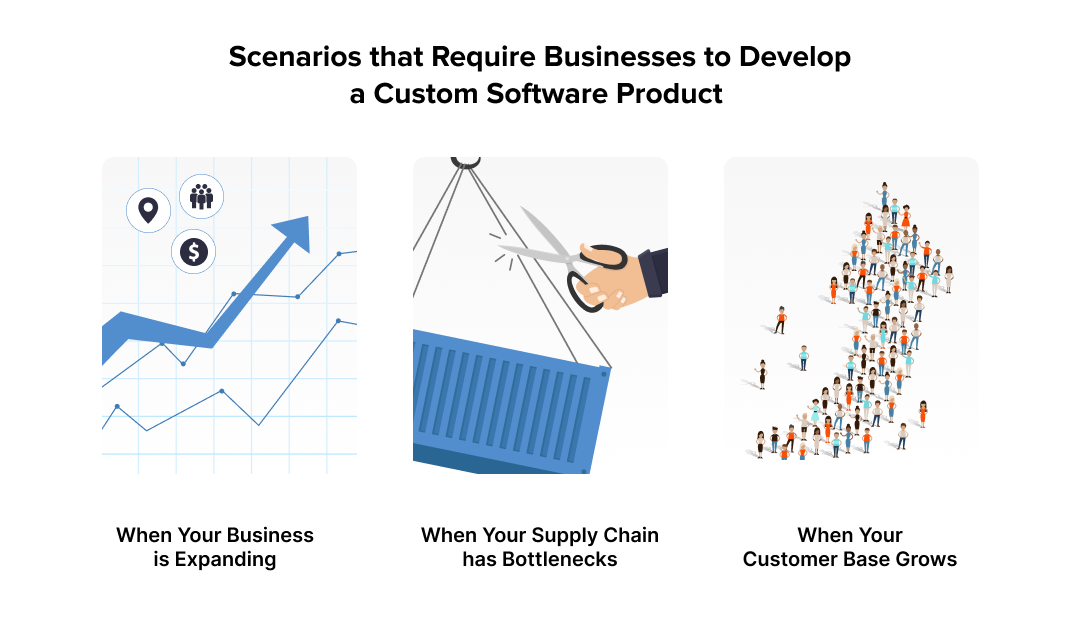
When Your Business is Expanding
When you start noticing visible growth in your business, it’s time to automate it. You must ensure that the quality of your production services is of the highest standards. Product development can help you evaluate the quality of your products and services, comply with government regulations, and deliver quality-based products and services. With software development solutions, you increase your chances for better returns.
When Your Supply Chain Has Bottlenecks
A dissatisfied customer will quickly move to your competition. Bottlenecks created by miscommunication, surges in demand, carrier disruptions, etc., in the digital supply chain management can lead to loss of opportunities. Custom software development can help you manage your supply chain challenges effectively while increasing overall efficiency. Furthermore, it can optimize your supply chain and help you make informed decisions.
When Your Customer Base Grows
When you experience exponential growth in your customer base, handling the data becomes complex. Those customers’ data need to be organized so that you can utilize it to make better business decisions. Software product development can offer you visibility and insights into your customer’s data, thus contributing to the financial health of your organization.
Things to Consider Before Starting with Software Development
To ensure the success of a software development project, it’s crucial to plan and evaluate several factors beforehand. Rushing into the development process without proper consideration can lead to unfavorable outcomes. Let us look at the multiple factors to consider in detail:
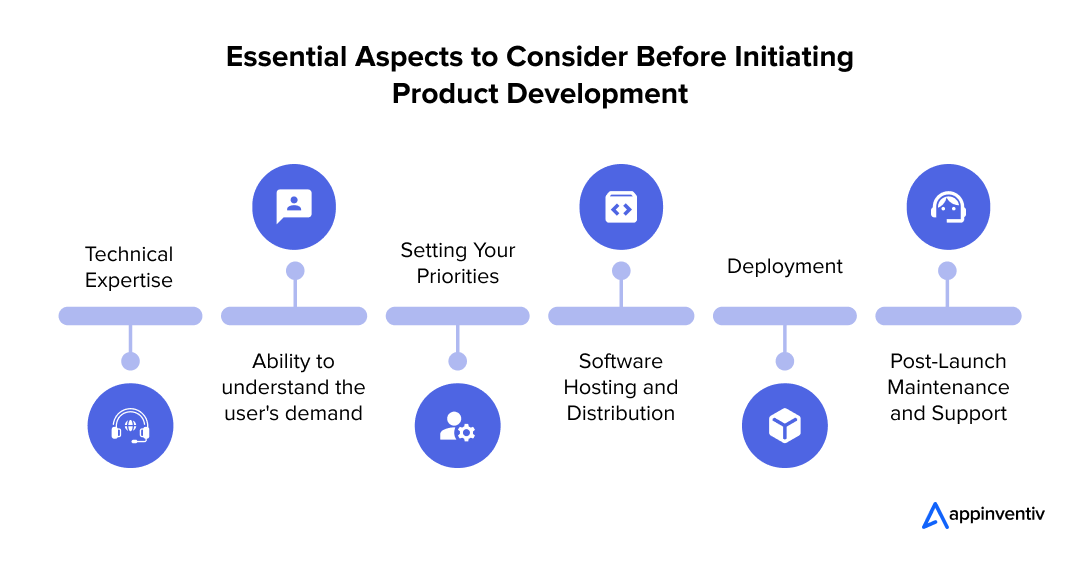
Technical Expertise
Technical skills are something that should never be forgotten. Often, it becomes difficult to manage things internally due to the lack of technical expertise. To extract the highest value of technology into your business, you need to hire a reputed product development company that can fulfill your technical needs.
Ability to understand the user’s demand
For any software development plan to succeed, understanding the user’s demand is a must. Consider validating your idea by creating an MVP. MVP is the first version of your product with a basic set of features. This helps generate valuable feedback for your product through which you can build a cutting-edge product that meets the user’s demand.
Setting Your Priorities
Understanding what is important for you and what you couldn’t do without. Knowing what is more or less critical for your business can steer the best possible plan for your project. Also, you must list down your software product’s tangible and intangible benefits to set your priorities right.
Software Hosting and Distribution
Before launching your software, you must know where to host it. You will host and distribute it in the app stores if it’s an app. However, if it’s server-based software, you must choose cloud services. The server needs to be configured and managed to remain stable and secure. You must also consider whether you have sufficient resources to handle this internally or need to hire a software product design and development company.
Deployment
You can choose a soft launch with targeted uses for the software deployment process or simply go for a direct launch. You will need to consider cloud data migration and be ready for the obstacles that might come your way during your deployment process. You can also schedule extra buffer time during the planning stages of product development.
Post-Launch Maintenance and Support
Post-launch support is an essential aspect of customer care that begins after the launch and lasts for a few weeks or months. Its primary objective is to evaluate and oversee the performance of your platform’s features and functionalities. This includes technical support, data integrity assurance, and management of customer service inquiries. The ultimate aim is to keep the software error-free and bug-free, which eventually helps in reducing downtime.
Bonus Read: How Much Does it Cost to Maintain a Software
Types of Software Product Development
Software development is the crux of the entire IT industry. Here are a few types of software development processes businesses need to know about:
| Type of Development | Description | Common Programming Languages |
|---|---|---|
| Application Development | Involves creating software to perform specific tasks, including requirement gathering, prototype design, programming, testing, and launching. | Java, C/C++, C#, Python |
| Frontend Development | Focuses on the visual elements and user interactions within applications. It includes building and managing user interfaces. | JavaScript, CSS, HTML |
| Backend Development | Handles server-side functionalities, such as API integration and database interactions, supporting frontend operations invisibly to the user. | Ruby, Python, Java |
| Security Software Development | Aims to protect company data and systems through development driven by cybersecurity experts, using ethical hacking and penetration testing. | NodeJS, ReactJS, jQuery |
| Database Development | Involves setting up and optimizing databases to organize, store, and analyze data, ensuring smooth application performance. | Python, SQL, PHP |
| Embedded Software Development | Focuses on creating software for embedded systems like Arduino or Raspberry Pi, often used in IoT devices. | Python, C, C++, Arduino, Assembly |
Features of a Robust Software Product for Businesses
Creating a compelling software product requires carefully selecting features that cater to basic functionalities and advanced capabilities. Let us look at the basic and advanced features of software products in detail below:
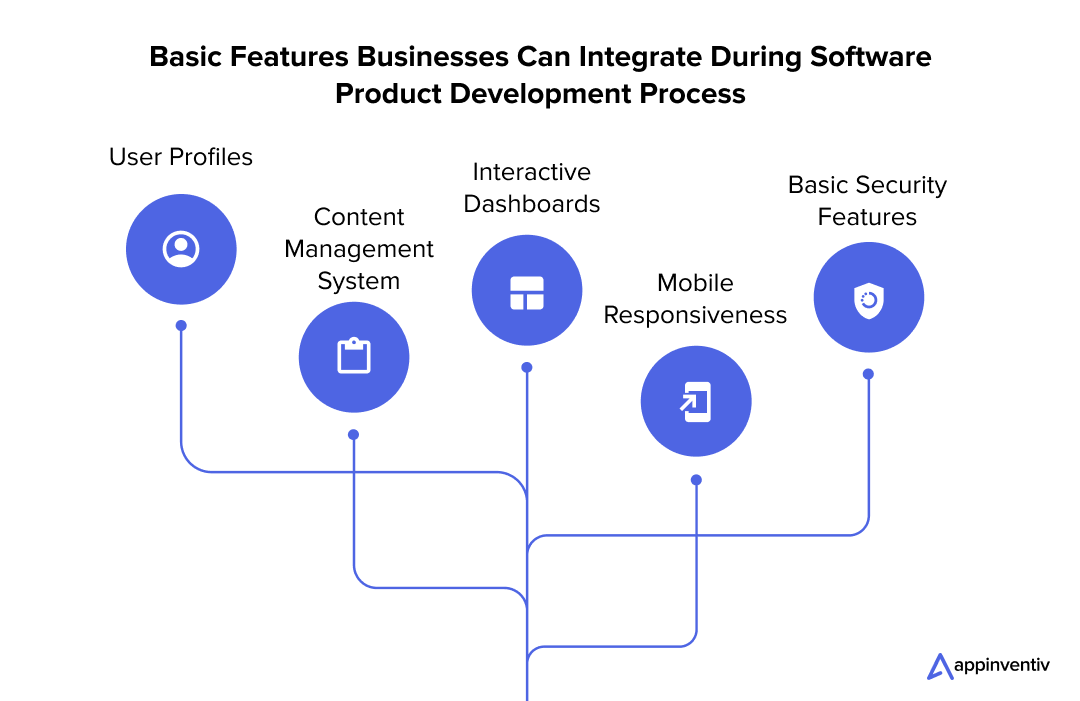
User Profiles
Enables personalized accounts for users to manage their settings, preferences, and access history.
Content Management System
Provides tools for admins to create, manage, and modify content within the software, ensuring content is up-to-date and relevant.
Interactive Dashboards
Visual displays of key metrics allow users to assess performance and other data at a glance quickly.
Mobile Responsiveness
Ensures the software is fully functional on mobile devices, adapting layout and functionality to fit various screen sizes.
Basic Security Features
Includes standard security measures such as SSL certificates, data encryption, and password protection to safeguard user information.
Advanced Features Businesses Should Integrate in Their Software Product
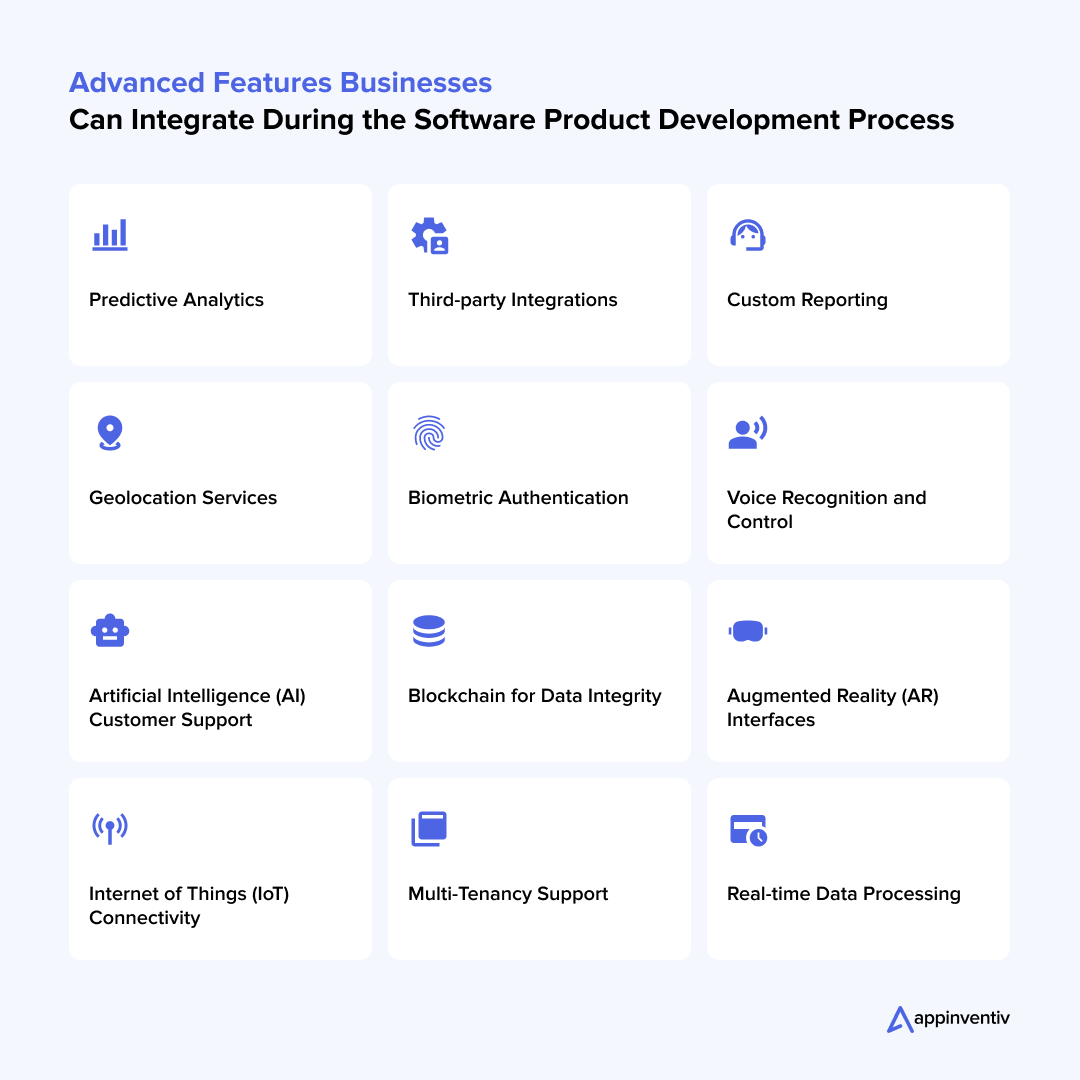
Predictive Analytics
Utilizes historical data and machine learning algorithms to forecast future trends, helping users make informed decisions through predictive insights.
Third-party Integrations
Facilitates seamless interoperability with external systems and software, enhancing the software’s capabilities and user experience without switching platforms.
Custom Reporting
Offers users the ability to create tailored reports with dynamic data visualization tools, allowing for deeper analysis and personalized data presentations.
Geolocation Services
Integrates GPS technology to provide location-based functionalities, which can personalize user experiences and increase the utility of the software in real-time scenarios.
Biometric Authentication
Employs advanced security protocols using biological characteristics, such as fingerprint scanning and facial recognition, to ensure secure user access.
Voice Recognition and Control
Incorporates voice command capabilities, allowing users to interact with the software using natural language processing, which enhances accessibility and ease of use.
Artificial Intelligence (AI) Customer Support
Implements AI-driven chatbots and virtual assistants to provide instant support and interactive help to users, improving customer service and operational efficiency.
Blockchain for Security
Utilizes blockchain technology to secure transactions and ensure data integrity, particularly useful in industries requiring high levels of transparency and security.
Augmented Reality (AR) Interfaces
Integrates AR to provide immersive user experiences, especially beneficial in sectors like retail, education, and real estate, where visualization plays a critical role.
Internet of Things (IoT) Connectivity
Enables the software to connect and communicate with IoT devices, enhancing data collection and automation capabilities across various environments.
Multi-Tenancy Support
Provides architecture that allows multiple users to use the software simultaneously while keeping their data separate and secure, suitable for SaaS products.
Real-time Data Processing
Processes data in real-time, providing immediate feedback and actions, which is crucial for software requiring instantaneous results, such as financial trading platforms or emergency services.
Leveraging Modern Technologies in Software Product Development
In this evolving digital landscape, embracing modern technologies is essential for software product development teams looking to stay competitive and innovative. These technologies help enhance product functionality while also significantly improving the efficiency and effectiveness of development processes. Here’s an overview of five key technologies that are shaping the future of software product development:
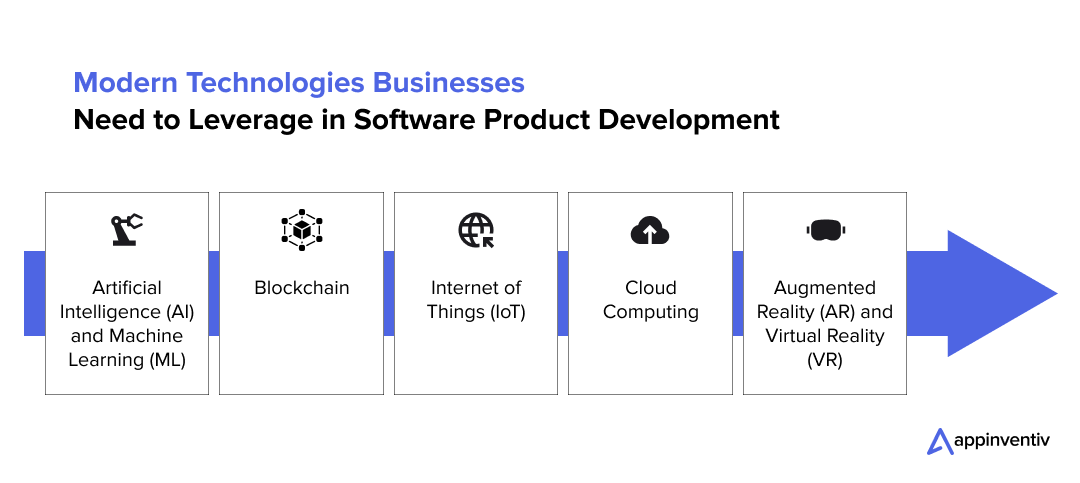
Artificial Intelligence (AI) and Machine Learning (ML)
AI and ML transform how products are designed and delivered, automating complex decision-making processes and enabling software to adapt to user behaviors and preferences. AI enhances customer interactions with products through intelligent chatbots and personalized recommendations. Meanwhile, ML continuously refines these interactions by learning from user feedback, helping to make products smarter over time.
Bonus Read: Understanding the Role of AI in Product Development
Blockchain
Entrepreneurs use blockchain technology significantly to boost security and data integrity in software product development. It creates secure, tamper-proof records and transparent transactions, essential for protecting intellectual property, maintaining audit trails, and ensuring regulatory compliance. This is especially critical in industries like financial services and healthcare, where data security and transparency are paramount.
Internet of Things (IoT)
IoT technology bridges the gap between digital interfaces and physical devices, enhancing product interaction with the environment. IoT transforms industries by ensuring safe and secure connectivity that allows products to collect data and provide real-time feedback, improving user convenience and operational efficiency. For example, IoT-enabled smart home systems can manage everything from energy use to security settings.
Cloud Computing
Cloud technology provides the backbone for modern software product development, offering the scalability and flexibility necessary for efficient product deployment and management. Cloud supports full cycle development, ensuring products are always available, reach a global audience, and receive continuous updates without interruptions.
Augmented Reality (AR) and Virtual Reality (VR)
AR and VR revolutionize user interface design and customer interaction by creating immersive product experiences. AR enhances retail software by letting customers visualize products in their homes before buying. VR, on the other hand, can simulate real-world interactions within digital environments, offering users engaging and interactive experiences that go beyond traditional screen interactions.
To understand how these technologies can specifically enhance various aspects of product development, consider the table below:
Bonus Read: AR/VR Trends and Predictions For The Upcoming Years
| Technology | Focus Areas in Product Development |
|---|---|
| AI and ML | Predictive analytics, automated testing, user behavior modeling |
| Blockchain | Data security, transaction management, decentralized applications |
| IoT | Device management, real-time data processing, automation |
| Cloud Computing | Infrastructure scalability, development and testing environments, storage |
| AR and VR | User training, interactive marketing, simulation-based testing |
How to Create a Custom Software Product?
Developing a software product that is custom to your business aspects requires a systematic approach. The potential benefits of creating a solution tailored to a business’s specific needs and requirements include increased efficiency, productivity, and a competitive edge. Planning and evaluating the development project thoroughly is crucial to ensure its success. Let us look at the software product development steps in detail below:

Idea and Concept
The initial product development process steps start with an out–of–the–box concept and validation of your software idea, but it is recommended that you document everything from the very beginning.
Avoid keeping your software product design and development ideas just inside your head. The concept should be carefully thought out and brainstormed to be executed. Here are a few things that you can probe into:
Define Your Goals
During this phase, you have to:
- List out the features your software will have
- Research other software products
- Figure out how your product will stand out
- Discuss the target audience
- Sketch out what the software product will look like
- Put together a user story
These simple steps will help accelerate your software product development life cycle and make the software product development process smooth right from the start! This also defines a clear plan that you have regarding the product.
Planning and Feasibility Analysis
While analyzing and validating your ideas, use software development consulting for feasibility analysis.
Feasibility analysis, an essential part of the discovery process, will help you determine the technical and economic aspects impacting your software product development process. While planning your product’s roadmap, you must remember a few things: time, resources, essential tasks, estimates, ROI, etc. An adequate amount of analysis and planning helps foresee the risks that can occur during the software product design process. It will help you get ready with risk mitigation strategies.
Proof of Concept
Once you finish your second step, you can start with a proof of concept (POC). POC is one of the most critical steps of the software product development life cycle. This stage exists way before the custom software product development process starts. It will help you validate your idea and establish a product-market fit. It will confirm technical feasibility and possible expectations and determine the potential blocks and the scope to accomplish them.
Design
Software product design is one of the integral software product development stages. Once the POC is successful, the design team conceptualizes a detailed software architecture, hitting the bull’s eye regarding the software’s features. Finding the right software design steps and strategies is about balancing user needs and business goals and not losing sight of either during the SDLC.
The product design of your software will include prototypes and the final mockups, ensuring they are exceptionally customer-centric. So, the wireframes, standards, workflows, and end goals should be defined, keeping user interaction and final output in mind.
Proof of Value
Proof of Value (POV) dives deeper into what the product means to your business, and it helps you determine if your goals are achievable! Through the POV process, you can easily take a single case from beginning to end to inspect all the elements and understand the gaps along the way.
A POV provides a better understanding of the predicted value that the products will bring and measure success.
Development and Coding
Once we have all the vital elements, such as the POV, design document, and functional requirement specification document, we can start with coding and development. It is all about giving life to your product! The custom software product development engineering team has to ensure that their coding process is accurate since it is potentially the riskiest step of the SDLC. Once the complete architecture, which includes the database, application programming interface, and planned functionality of the solution, is built, we can move toward the testing stage.
Quality Checking and Testing
Since the team is developing the software, quality checking, and testing are essential agile software product development processes. It’s always recommended that bugs be tested, tracked, and fixed simultaneously. However, once the product is developed successfully, you must also have final testing.
You can start with these simple testing steps:
- Releasing the product to a small group of beta testers
- Use UX product development software tools to track how the users interact with your product.
Deployment and Implementation
Once you finish the product development steps like designing, coding, and testing your software, it is time to install the crafted product. The software has now been moved to production, including data and component transfer. However, only some specific changes will be deployed during the subsequent releases. At this stage, end-users and system analysts can see, use, and experiment with the ready software.
Marketing Strategies
Simultaneously, the marketing team will keep developing a multi-platform approach to turn the spotlight on your product. It is imminent that the out-of-the-box marketing strategies will focus on telling the product’s unique story, understanding the competitive analysis, investing in digital marketing, and creating social media and SEO master plans to enhance the product’s value.
Maintenance, Upgrades, and Enhancement
It is vital to understand that the software development process is not over after the deployment phase, and the final stage includes maintenance of software products and regular updates. Being the last yet important software product development stage, this process starts with post-launch support. Remember that customer needs are evolving daily; therefore, maintaining the software as per those requirements is essential.
The product will be upgraded, maintained, polished, redesigned, and enhanced according to customer feedback and rapid development in the IT sector. This would be a perfect time to modify the software’s functionalities to improve performance. This way, you will be able to meet the actual needs of your target audience.
Understanding the Software Development Time and Cost and How to Lower Them
Undoubtedly, the custom software product development cost can vary between $45,000 to $300,000, depending on several factors like the location of the software development team, the type and size of the project, the features to be integrated, the tech stack used, the UI/UX design of the software, etc.
Simply put, complexity is a key driver of both the cost and timeline of software development. Projects with advanced technologies or detailed business requirements demand more resources, specialized expertise, and longer testing. As complexity grows, the need for intricate designs and robust testing protocols also increases, which can substantially raise costs and prolong the development process.
| Complexity Level | Estimated Software Product Development Cost | Time Frame |
|---|---|---|
| Low Complexity | $45,000 – $75,000 | 3-6 months |
| Medium Complexity | $75,000 – $150,000 | 6-12 months |
| High Complexity | $150,000 – $300,000 | 12 months and beyond |
Certain steps can be taken to lower the cost of product development software. These include:
Step 1: Turn to Outsourcing
Outsourced software product development services results allow you to optimize the overall development costs. Here are a few reasons to consider outsourced software product development:
- Initial in-house cost-cutting will save you a lot of money through on-shore salaries, benefits, taxes, marketing and management costs, etc.
- Zero pay-out on software architecture
- You can choose designers and developers based on technical knowledge, relevant experience, and budget criteria.
Bonus Read: What Makes Outsourcing a Profitable Choice for Startups
Step 2: Leave No Room for Assumptions
You should not be ambiguous about what you want regarding product development! If the requirements are unclear, your product can become a disaster because of haphazard design, unplanned functionality, and the lack of distinctness.
Documenting every requirement and expectation regarding your product will help eliminate the room for vagueness. This will reduce the overall software development costs and save time for you, allowing you to focus on other important business problems and solutions.
Step 3: Testing is the Key Element
Ensure that the testing team is involved every step of the way. Successful software developers reveal that they started testing for red flags, errors, or bugs right from the design phase.
If the errors are found at a later stage, the intensity of rework increases! The quality check team will save cost and time by reducing the chances for mid-project redesigning and avoiding sub-optimal product quality. By making software testing your ‘mantra,’ you will throw light on potential risks and surface functionality conflicts.
Step 4: Prioritize the Must-Have Features
We all buy gadgets and do not use about 50% of the features; the same applies to software products! They have a lot of unessential functions that your target audience might never use. Such features increase the development time and maintenance cost, so ensure your product has the most viable features.
We advise you to start with less money and create a basic product. Once it turns out to be profitable, you can always expand the product’s functionalities. This step will save you time and cost. Also, conduct market research to determine and forecast what your clients embrace about your product.
Step 5: Start with an MVP
Developing a Minimum Viable Product (MVP) is a strategic approach to gauge user response with just enough features to satisfy early adopters. This step saves time and money and provides critical insights from initial feedback, guiding the final product design. The MVP process emphasizes the importance of testing viability early and adjusting based on real user data, ensuring the product meets market needs before full-scale development.
Inhouse Development vs Outsourcing: Understanding the Right Strategy to Develop a Robust Software Product
Businesses usually have two options when they get to the technical part of software development – in-house development vs.outsourcing. Let us offer you a quick insight into the pros and cons to help you make informed decisions:
| Development Type | Pros | Cons |
|---|---|---|
| In-House Software Product Development | • Direct control over the development process • Easier integration with internal processes • Immediate communication with the team | • Higher costs due to salaries, benefits, and infrastructure • Significant management and training efforts • Limited to in-house skill availability |
| Outsourced Software Product Development | • Cost-effective, reducing overhead • Access to global talent and specialized skills • Scalability and flexibility in project management | • Less direct control over the development process • Potential challenges with time zones and communication |
Tips to Outsource a Software Development Company
Choosing the right outsourcing partner is an important decision that should not be taken lightly. After all, you will spend your hard-earned money on a project you have always dreamt of. Check out the top tips for hiring dedicated development team
Conduct a Background Check
To validate a company’s experience and other professional trajectories, contact those businesses that have hired your preferred partner earlier. You can also check their testimonials, giving insight into the client review. This will help you know their experience and the outcome they have received.
Check Their Abilities and Technical Knowledge
For your product to be of top-notch quality, your software development partner should have the ability and excellence in modern software development. Find out if they have proper knowledge about the technology and industry. It is always good to hire a software development team that has worked with various industry verticals and different components of various software.
Check the Type of Services They Provide
Before deciding to pick your offshore software product development company, you need to understand and define the needs of your project clearly. Once you have done that, you will know exactly what services you require from the custom software development company.
You need to check all the software product development services that the company provides. Working with companies that offer a full-service cycle like software development, testing, and design is more convenient. Also, you need to know if the company will provide the necessary support and maintenance after the software launch.
Check Their Experience in the Market
Experience is one of the important things in the modern software development process. You need to cross-check the years of experience an organization has in the industry and the type of projects they have worked on. Check out the directory sites like Clutch, where you can find the complete details about the company, including client testimonials and reviews. By knowing your experience, you can justify if the company suits your software development needs.
Check Their Software Development Methodologies
Each software development company has its unique process of developing intuitive software. Usually, companies follow flexible approaches to methodologies. For example, most software development companies rely on an agile software product development process, which makes the entire process adaptable to changes that can happen when redeveloping a software product. However, a few stick to a limited number of methodologies. Companies these days either prefer Agile or Scrum methodology for software development.
Check on the Cost of the Project
One of the first questions you ask while closing a deal is the pricing. The cost of developing the software depends on the size and type of the project, along with the size of the software development team. Other than that, several contributing factors like technology stack and feature implementation exist.
Software Product Development Best Practices
Software development practices are constantly improvising and evolving. In 2025, businesses need to rethink the industry workflows, implement new custom software product development strategies, and embrace a wide range of new tech solutions. Let’s check out some of the software product development best practices for building the right solution:
Identify the Target Audience
For any product development process, you must develop a systematic product vision. This vision includes a deeper understanding of the market trends and conditions and the features to maximize income and minimize the time to market. Best practices, along with proper technology in place, can help develop a great product. Ask these questions to identify the target outcome:
- What opportunities are you trying to capitalize on?
- What problems are you trying to solve exactly?
- What will success look like?
- How do you see your product within the context of a shorter and long-term strategy?
In other words, you need to understand the ways to develop a successful product.
Define and Design Your Product Roadmap
Design and architecture still matter a great deal. Therefore, defining your design roadmap or software design steps early in software development can help you achieve the desired outcome. Describe your system architecture as a Minimum Viable Product or MVP. This will help you to build an architecture roadmap.
The benefit here is twofold. First, the stakeholders gain complete visibility of where their project is standing while the development team learns the next steps they need to take. Beyond architecture and design, you will also need to define your technology stack at this stage and determine the skills required to cover across the development process.
Take User Feedback
After you’re done with your research part, test your prototypes with your potential users. Testing your software with real users is extremely vital. Even if you have a clear idea of why you are building software products, how sure are you that it is viable for the target audience? That is the reason why getting better feedback from your users has become so vital.
Ensure your product undergoes user testing to validate its functionality and appeal in real-world scenarios. This phase helps refine the user experience based on feedback, making necessary adjustments before the full launch. This proactive approach ensures the final product meets user expectations and addresses their needs effectively.
Go For Beta-Testing
Beta-testing is another crucial step before your software launch, ensuring it meets the requirements and functions smoothly. This is another way to know how your software will perform in the app store.
Why beta testing?
It is done to find the bugs hampering your software’s user experience. The beta testers help detect errors in your software’s beta version. So, before your product launches, ensure that you solve all the bugs and issues associated with your software.
Create a Buzz With Social Media
Social media is one of the most amazing mediums for creating hype amongst users. This is also one of the greatest options for building a strong community of your users. Choose a few platforms where you can find many engaging audiences.
Keep posting blogs or other posts related to your software on various social media platforms like LinkedIn, Facebook, Twitter, etc.
Popular Software Development Methodologies
A team picks a specific set of product development software tools and procedures for the software product design, testing, management, and other software development processes. These choices rely on the aim that stands before the team and the objectives of the product that is to be built.
Here are the most well-known software development models used by various experienced teams across the IT ecosystem.
| Methodology | Description | Key Characteristics |
|---|---|---|
| Waterfall Model | A linear, sequential approach where each stage must be completed before the next begins. | Strict sequential order No overlap between the phases |
| V-Shaped Model | Similar to the Waterfall model it includes a corresponding testing phase for each development stage. | Early test planning Tests designed during the development phases |
| Incremental Model | The product is developed in increments or parts, allowing parts to be designed, implemented, and tested early. | Divided into builds Allows partial testing and deployment |
| Rapid Application Development Model (RAD) | Focuses on quick iterative development and prototyping. | Time-sensitive Encourages customer feedback |
| Agile Model | Emphasizes iterative development and responsiveness to changing requirements. | Incremental releases Frequent reassessment High adaptability |
Challenges Associated with Robust Software Product Development
Developing a robust software product involves many challenges that can slow progress and affect the final product’s quality. Effectively addressing these challenges in the software product development process is key to ensuring its success in a competitive market. Let’s explore some common challenges and practical solutions businesses face when building software products.
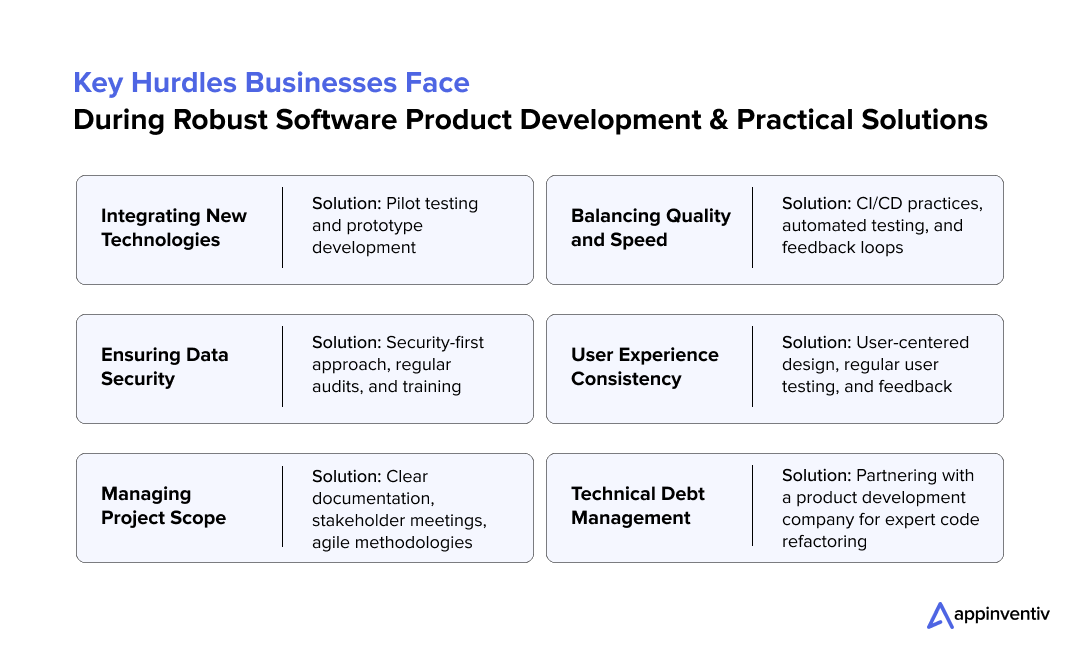
Challenge 1: Integrating New Technologies
Keeping up with rapidly evolving technologies can be daunting. Integrating new tools like AI, IoT, or blockchain into existing systems often requires substantial changes in software aspects, leading to complexity and potential disruptions.
Solution: To effectively integrate new technologies, conducting thorough research and pilot testing is essential. Starting small with prototypes can help teams understand the implications and gradually scale up as they become more comfortable with the technologies.
Challenge 2: Ensuring Data Security
As software products handle more sensitive user data, the risks of data breaches and cyber-attacks increase. Ensuring robust security measures are in place is challenging but critical.
Solution: Adopting a security-first approach in the development process is vital. Regular security audits, compliance checks, and up-to-date encryption methods can significantly enhance data protection. Training staff on security best practices and staying informed about the latest security threats are also crucial.
Challenge 3: Managing Project Scope
Scope changes, where the initial requirements of a software project expand gradually without proper control, can lead to delays, increased costs, and strain on resources.
Solution: Clear and thorough documentation of project requirements and regular stakeholder meetings can help manage scope. Implementing agile methodologies that accommodate changes more fluidly can also prevent scope changes from delaying the project.
Challenge 4: Balancing Quality and Speed
There is often a tension between the need to deliver software products quickly to meet market demands and the necessity to ensure the high quality of the product.
Solution: Implementing Continuous Integration/Continuous Deployment (CI/CD) practices can help balance these needs. Automated testing and regular feedback loops within the development cycle ensure that quality is maintained even as development moves quickly.
Challenge 5: User Experience Consistency
Ensuring a consistent and intuitive user experience across various platforms and devices is challenging, especially with the diversity of user interfaces and expectations.
Solution: User-centered design practices are key. Regular user testing and feedback collection at every stage of product development can help identify inconsistencies and areas for improvement.
Challenge 6: Technical Debt Management
Technical debt refers to the future costs and problems associated with shortcuts and suboptimal software architecture or development decisions. As technical debt accumulates, it can complicate future changes and maintenance, making the software less adaptable and more error-prone.
Solution: Hire a software product development company that can help you effectively manage and reduce technical debt. These companies have the expertise and resources to conduct thorough code reviews and implement best practices that prevent debt accumulation.
They can dedicate time to regularly refactor code, ensuring that the software meets current needs and is scalable for future developments. By working with experts who understand the importance of maintaining clean, efficient code, businesses can focus on innovation and growth while leaving the technical complexities to experienced software product developers.
Showcasing Excellence in Digital Product Development: Success Stories Highlighting Our Expertise
Our team excels at crafting digital solutions tailored to the unique demands of our clients. Through these detailed case studies, we demonstrate our commitment to innovation and our ability to drive significant business value. Each product we developed for our clients reflects our technical expertise and highlights our strategic approach to solving complex challenges in various industries.
Let us look at the multiple software product development examples that our dedicated team is famous for:
JobGet: Transforming the Job Search Landscape with AI
Our experts developed a groundbreaking AI-powered Job Search Platform designed to expedite the job search process for blue-collar workers, dramatically reducing the time from months to days. The software was able to not only streamline job searching but also lead to significant achievements:
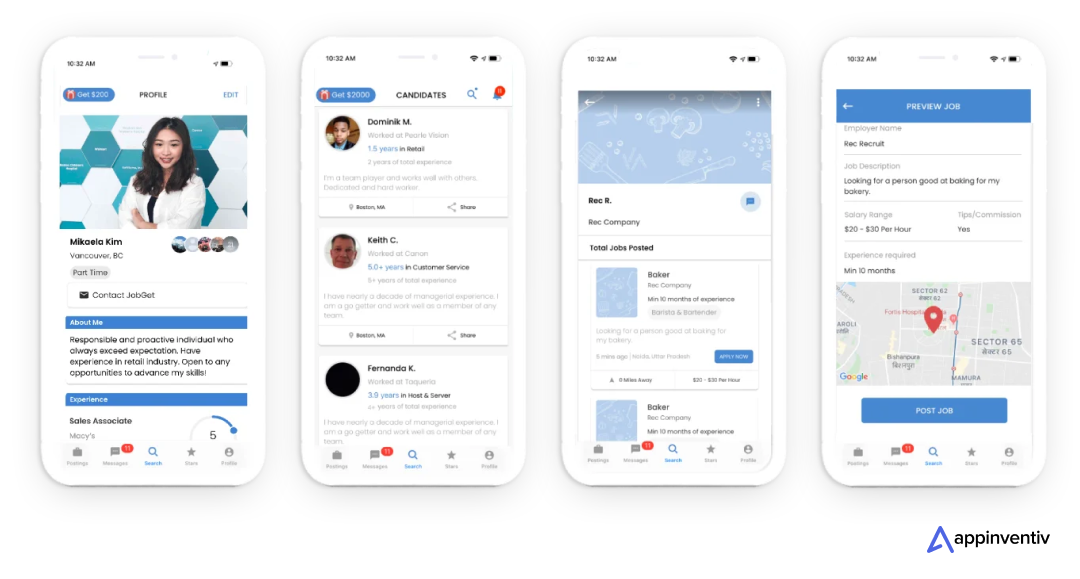
- Successfully raised $52 million in Series B funding, evidencing investor confidence and the app’s market potential.
- Surpassed 2 million downloads, indicating strong market acceptance and user engagement.
Edfundo: Educating the Next Generation on Financial Literacy
Our experts developed EdFundo, an engaging financial education platform that equips children with essential money management skills from an early age. The platform is recognized as the world’s first financial intelligence hub, which includes a digital learning lab and a prepaid debit card. It is designed to introduce economic concepts to children in a user-friendly manner. The software helps children learn about money management and provides parents with tools to support their children’s financial education.

- Secured $500K in pre-seed funding, underscoring the trust and support from early investors.
- Honored as the FinTech Startup of the Year, highlighting its innovation and impact in the financial technology sector
ILITY: Innovating Real Estate Management
Our experts developed ILITY, a sophisticated SaaS platform designed to transform the real estate sector by enhancing operational efficiencies and profitability. This comprehensive solution streamlines property management processes, from listing and lease management to maintenance, fostering substantial growth opportunities:
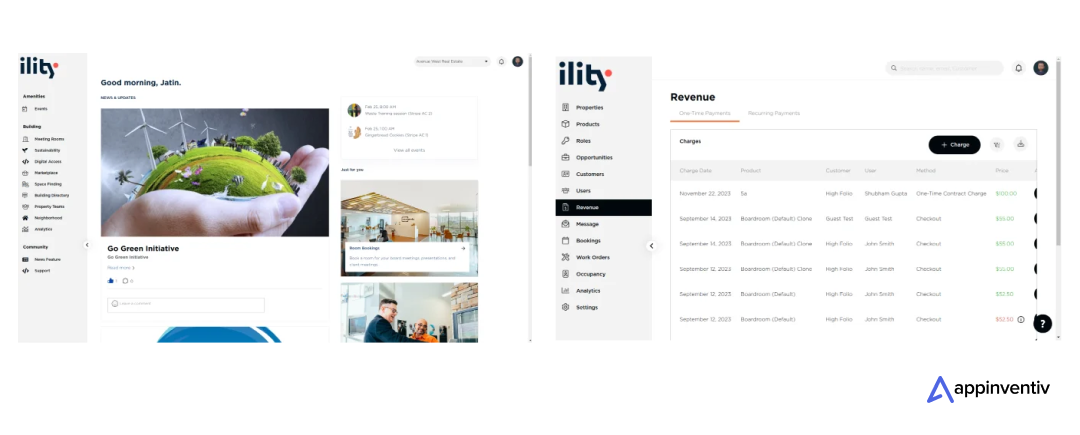
- This led to a 40% increase in occupancy, demonstrating its effectiveness in enhancing property appeal.
- Enhanced landlord ROI by 2%, ensuring optimized operations and cost-effectiveness.
KFC: Revamping a Global Brand’s Digital Presence
We partnered with KFC to overhaul its digital footprint globally, developing and launching over seven KFC innovative software applications within a year. The product yielded significant enhancements in customer engagement and sales metrics:

- Enhanced the conversion rate by 22%, driving more sales through digital channels.
- Achieved a 4.5 average rating across app stores, reflecting high user satisfaction.
Why Appinventiv is the Ideal Partner for Software Product Development
The most important outcome of availing of custom software product development services is that it will give the project execution process much-needed fluency. It is vital to understand that the SDLC can be structured to meet the needs of a particular project to deliver the best product possible.
However, for seamless software product development that can help you gain instant traction in the market, you must search for a reliable custom software product development agency capable of incorporating the latest technologies for your product to facilitate market disruption.
Appinventiv is a distinguished frontrunner and a dedicated custom software development company. With our proficient product development team at your service, we possess the expertise to execute requirements analysis, design, development, testing, and, ultimately, the evolution of your product. Here’s why we are the right partner for your ensured success:
| Focus Area | What Appinventiv Can Do | How We Do It | Benefits to You |
|---|---|---|---|
| User Experience (UX) Design | Design intuitive and engaging user interfaces for software products | Utilize the latest UX design principles and tools to create responsive and adaptive designs | Enhances user satisfaction and engagement, leading to higher retention rates and a better overall user experience |
| Custom Software Development | Develop tailored software solutions | Use agile methodologies to build scalable and flexible software tailored to specific needs | Ensures the software perfectly fits your business requirements, improving efficiency and productivity |
| Data Security | Implement robust security protocols | Integrate advanced encryption methods and conduct regular security audits | Protects sensitive information, mitigates risks of data breaches, and complies with regulatory requirements |
| Cloud Integration | Facilitate cloud-based solutions and services | Leverage powerful cloud platforms like AWS, Azure, and Google Cloud for deployment and storage | Offers scalability, improves reliability, and reduces infrastructure costs |
| Mobile Optimization | Optimize software products for mobile use | Ensure software is responsive and optimized for various mobile devices and platforms | Expands user access and convenience by providing a seamless mobile experience |
| Artificial Intelligence (AI) | Incorporate AI functionalities such as chatbots and data analysis | Implement machine learning algorithms to automate processes and personalize user interactions | Streamlines operations, offers insights into user behavior, and enhances decision-making processes |
| Internet of Things (IoT) | Integrate IoT features for enhanced connectivity | Develop IoT applications that allow your products to interact and collect data from connected devices | Enables real-time data collection and automation, enhancing product functionality and user engagement |
| Performance Optimization | Enhance software performance and speed | Optimize code and infrastructure to improve load times and processing efficiency | Provides a smoother, faster user experience that can handle high volumes of transactions and data |
| Scalability Solutions | Plan and implement scalability strategies | Design architectures that can scale with user growth and peak loads | Ensures your software can grow with your business without performance hitches |
Contact us to explore how our tailored software product development can revolutionize your business operations and position you at the forefront of your industry.
FAQs
Q. What is software product development?
A. Software product development refers to the end-to-end process of creating and refining software applications or systems. It encompasses stages like defining requirements, planning, programming, testing, and launching the software. The aim is to deliver a functional, reliable, and user-centric product that addresses particular needs. Teams often employ software product development methodologies such as Agile or Waterfall to manage the development efficiently and ensure a high-quality final product.
Q. What is software development outsourcing?
A. Outsourcing custom software product development is about delegating software development activities responsibilities to a particular vendor. It covers the lack of internal expertise or resources that support business growth and other digital transformation activities.
Q. What are software quality standards?
A. Software quality standards are different rules, specifications, or guidelines used to ensure that developed software products fit the quality parameters. For example, ISO/IEC 27001 is an international standard for information security.
Q. What is the role of Artificial Intelligence and Machine Learning in software development?
A. Artificial Intelligence and Machine Learning software solutions are widely utilized in various business domains. The role of such advanced software product development solutions is to improvise business processes, reduce manual work, and help achieve better business results.
Q. Why software product development is important for businesses??
A. Software product development is crucial for businesses because it enables them to create tailored solutions that meet specific operational needs and customer demands. By developing custom software, companies can improve their productivity, streamline processes, and enhance user experiences, leading to increased customer satisfaction and loyalty. Additionally, software product development allows businesses to stay competitive in a rapidly evolving technological landscape by adopting new technologies and innovations that can drive growth and efficiency. Overall, investing in software product development is essential for any business looking to modernize, optimize, and expand its operations.


- In just 2 mins you will get a response
- Your idea is 100% protected by our Non Disclosure Agreement.
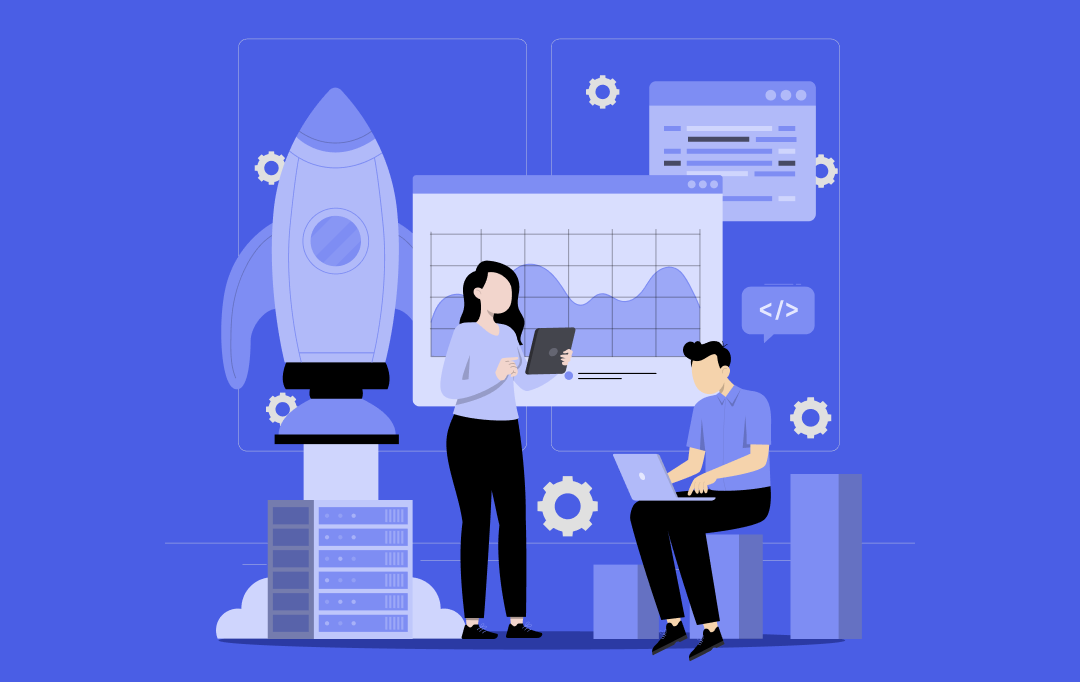
Outsourcing product development is not just a buzzword or a futuristic concept; it is a present reality in the modern business world. What started as a trend during the COVID-19 pandemic has become a new norm for businesses across industries. The Grand View Research report indicates that the global business process outsourcing market will hit…

With a forecasted market size of $13 billion by the year 2025, the adoption of Business Intelligence (BI) across industries is becoming extremely widespread and urgent. Right from traditional sectors like banking and healthcare to flourishing domains like Edtech and InsurTech, business intelligence has found a use case in every sector you can think of.…
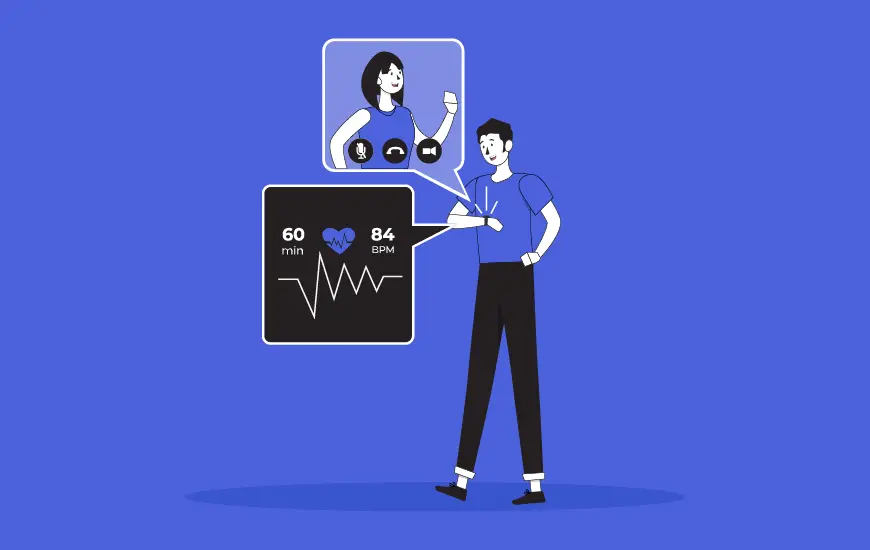
When Google acquired Fitbit for $2.1 billion in 2021, it was not just buying a fitness tracker but investing in a thriving ecosystem powered by wearable apps. Fitbit’s success was not just about hardware; its app’s ability to deliver real-time health insights, sync seamlessly with multiple devices, and engage users with personalized recommendations made it…







